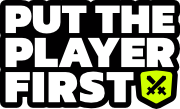
As part of The Arena, I recommend that you keep a design journal. It’s a place for you to record your entries and ideas that would be useful in your journey.
When you’re making entries into your design journal, I recommend using the mnemonic GOLD.
- Game (Title & Context)
- Observations (What stood out)
- Lessons (Why it works or fails)
- Design Use (How you can apply it)
Here’s what it looks like, expanded:
- Game: What was the game you were playing? What type of game was it?
- Observations: What was the specific mechanic, aesthetic, interaction or moment that stood out?
- Lessons: Why do you love or hate it, in terms of experience, design principles or psychology?
- Design Use: How you can use or avoid this in your own game designs?
Here’s how it looks like in action:
- Game
- Tekhenu: Obelisk of the Sun. Board game about Egyptian theology and its associated rituals.
- Observations
- I’d finish my turn in about a minute, but I’d have to wait almost 10-15 minutes before I could play again – in a 4 player game.
- Lots of diverging options and many different ways to get victory points. Until I grokked how the game worked, it was super intimidating. The teach/rulebook didn’t provide me information in a progressive way.
- Very little player interaction going on
- Lessons
- I enjoy having a greater direct influence on other players’ actions
- I don’t like the long wait times with nothing to do
- Mental model of the game experience needs to be built into the players’ mind in increasing complexity – either via the rulebook, the teach or gameplay modes.
- I like chunking of information for easier processing.
- Design Use
- Add meaningful decisions to be made between turns
- Explain games in terms of subsystems during teaching – and build up to the supersystem step by step
- Player interaction can be delivered if played as teams.
If you have any questions, let me know!


Leave a Reply